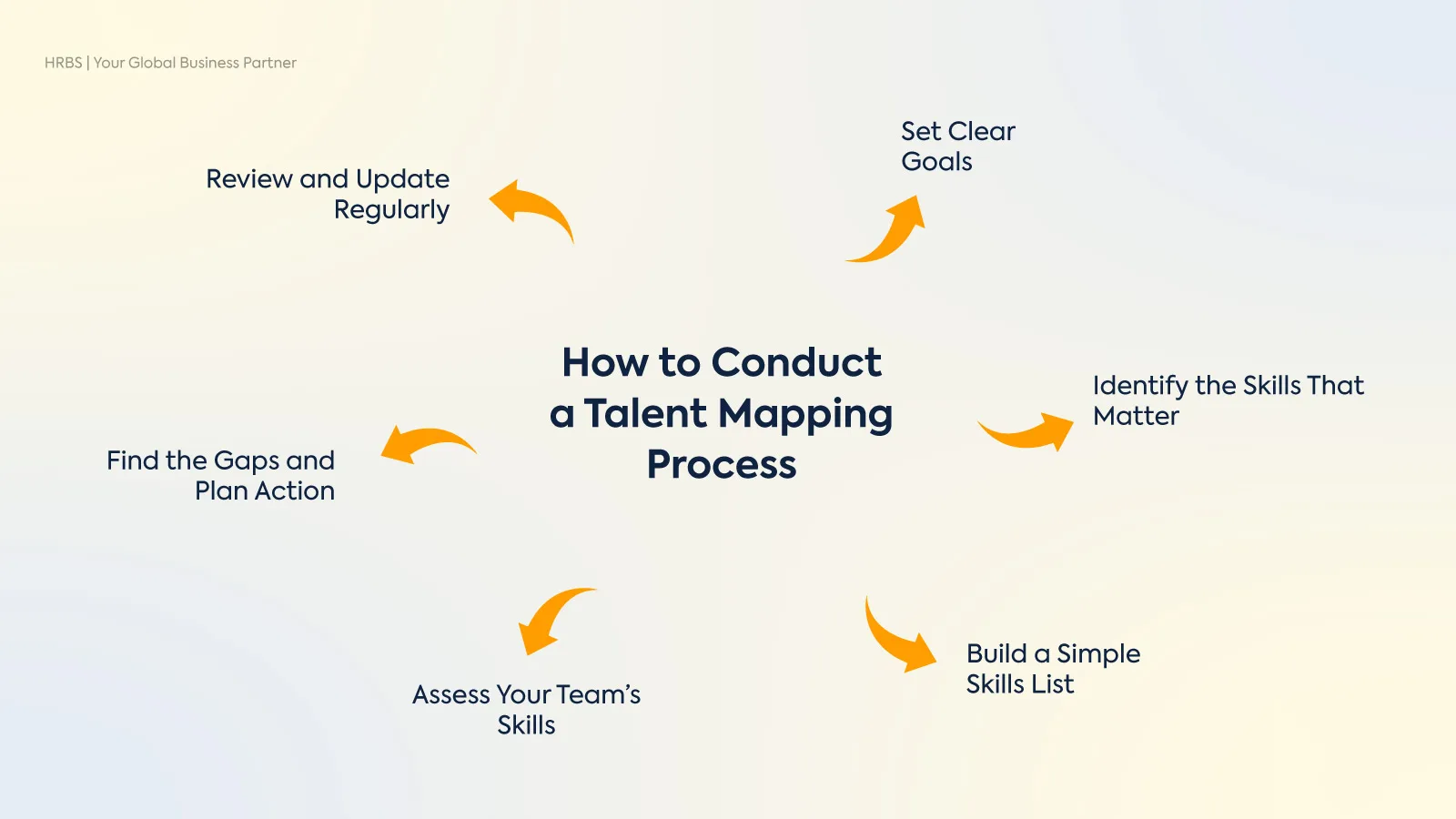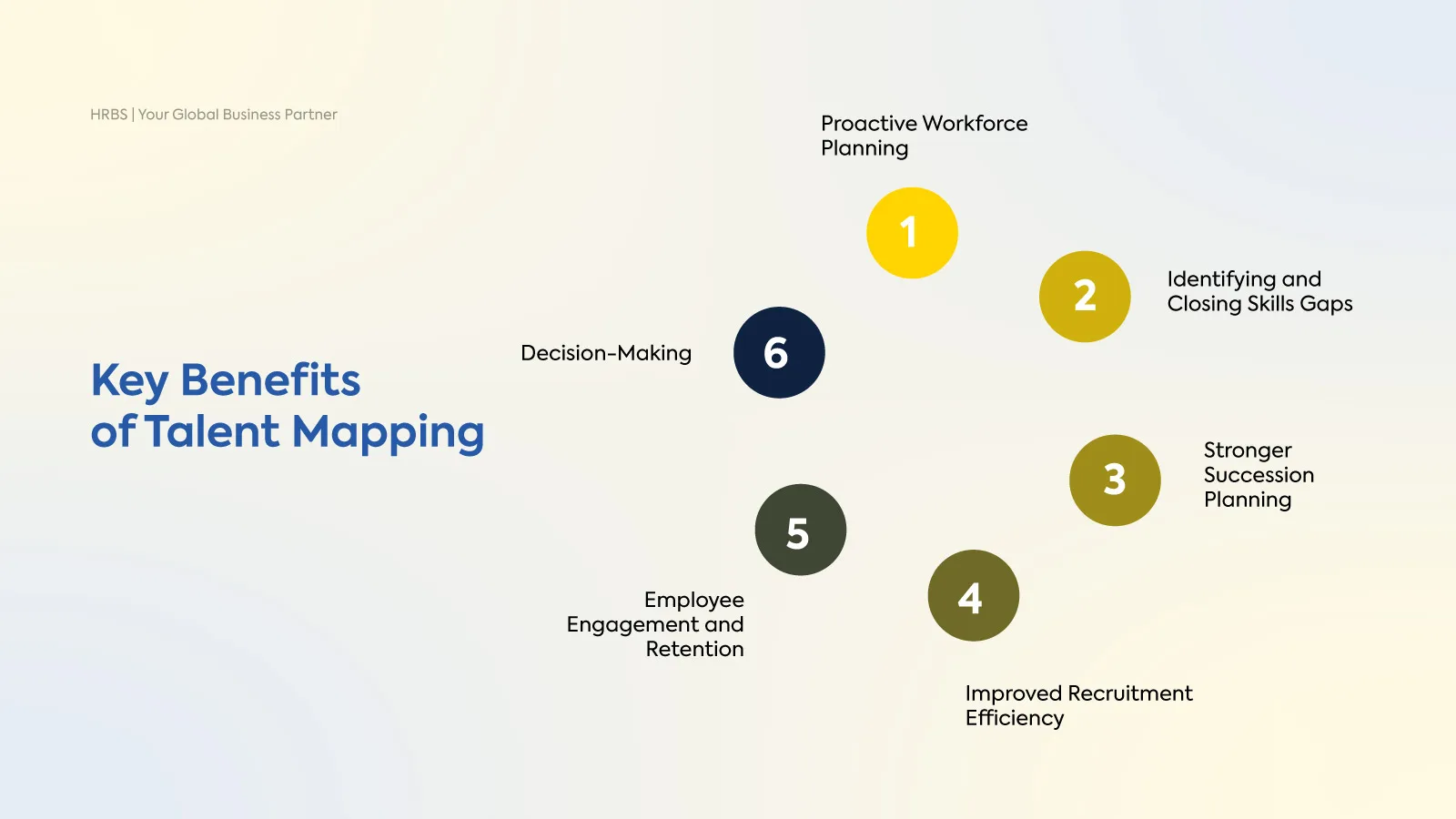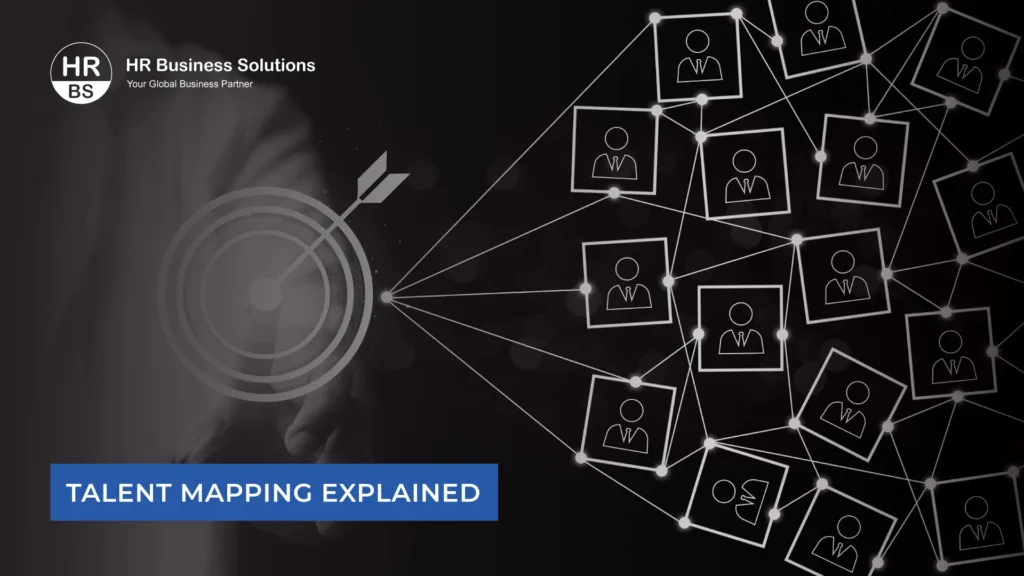Having the right people on your team matters more than ever. But with many businesses competing for skilled talent, it can be challenging to maintain a strong and motivated workforce. Talent mapping is a practical way to plan ahead, helping you build a team that is ready to meet future needs rather than just filling gaps. Looking closely at the skills and experience within your organization provides a clear understanding of where you stand and what you need.
Talent shortages worldwide are expected to reach 85 million by 2030, which could lead to loss of up to $8.5 trillion in productivity. At the same time, nearly half of all employees will need to gain new skills by 2030 to keep up with evolving job requirements. Talent mapping helps identify strengths to develop further, areas that need support, and where training or new hires can make a real difference. In this guide, we will explain what talent mapping is, how it supports recruitment and workforce planning, and walk you through practical steps to start using it in your organization.
What is Talent Mapping?
Talent mapping is a clear and practical process that helps an organization understand the skills and strengths of its employees today while preparing for what it will need tomorrow. Instead of simply reacting when positions open up, talent mapping looks closely at employee abilities and performance to identify where skills are strong and where gaps exist. This helps companies plan for future hiring and training more effectively.
By matching current workforce capabilities with business goals, talent mapping allows employers to make better decisions about recruitment, promotion, and development. It also supports building a steady pipeline of talent, reducing surprises and making workforce planning more predictable. In short, talent mapping gives organizations a reliable way to align their people strategy with their company’s future needs.
Talent Mapping Approaches: Traditional vs. Skills-Focused
Talent mapping is critical for aligning workforce capabilities with organizational goals. Two predominant approaches exist, traditional talent mapping and skills-focused talent mapping, each offering distinct advantages.
Traditional Talent Mapping
Traditional talent mapping emphasizes employee roles, job titles, tenure, and career progression. This approach relies heavily on hierarchical structures and historical data such as performance reviews and length of service to identify employees who can fill current or future leadership roles. It is particularly useful for:
- Succession Planning: Ensures a pipeline of ready candidates for critical roles, reducing risk of leadership gaps.
- Career Pathing: Maps employee progression through defined roles based on experience and demonstrated performance.
- Role-Based Assessment: Evaluates employees based on fit for specific positions, which can simplify workforce planning in stable industries with clear role definitions.
Limitations: This approach may miss essential emerging skills needed to keep pace with digital transformation or shifting market demands. It might overlook high-potential candidates whose skills don’t align neatly with current roles but who can thrive in new capacities.
Skills-Focused Talent Mapping
Skills-focused talent mapping looks at the real skills and abilities employees have, no matter their job titles. It includes technical skills, soft skills, certifications, and actual work performance. This approach helps organizations:
- Skill Gap Analysis: Accurately identifies areas where current employees lack critical expertise, enabling targeted upskilling and reskilling programs.
- Build Flexible Teams: Assign people based on what they can do, not just their current job, making it easier to adapt to changing projects or goals.
- Future-Proofing: Prepares the workforce for evolving business needs, such as adopting new technologies, regulatory changes, or market expansions.

How to Conduct a Talent Mapping Process: Step-by-Step Guide
A skills-focused talent mapping process gives a straightforward way to understand the strengths in your workforce, find gaps, and prepare for what’s ahead. Here’s how to do it, with practical insights included at each step.
- Set Clear Goals: Start by figuring out why you want to map skills, whether it’s planning for growth, closing talent gaps, or simply getting a better picture of your team’s abilities. Make sure your purpose is shared across the company, so both managers and team members know what to expect and can contribute openly. Including people at all levels, and being transparent about goals, helps everyone feel part of the process and makes the results more useful.
- Identify the Skills That Matter: Work with both leaders and employees to list the skills your company needs to succeed. Think about technical abilities, soft skills like teamwork, and even feedback from customers or partners, sometimes they can point out skills you never realized were important. Consider skills that help you stand out or support future plans, not just what’s required to keep things running today.
- Build a Simple Skills List: Create a clear list or table of the skills you want to track, grouped in a way that makes sense for your work, such as technical, leadership, or customer-facing skills. It helps to keep this information easy to access, so everyone knows what’s valued and being measured. When your list is visible and easy to understand, it encourages people to speak up if they have skills that don’t always get noticed.
- Assess Your Team’s Skills: Collect information about who has which skills and how well they can apply them. Use input from real work, like recent projects, quick self-assessments, and team or manager feedback, rather than only relying on formal reviews. Don’t overlook skills gained through life outside work, like volunteering or hobbies, which can bring unexpected strengths into your organization.
- Find the Gaps and Plan Action: Once you know what you have and what’s missing, compare your needs with your team’s current abilities. Decide where training would be helpful, where work assignments could stretch people into new areas, or if hiring is needed to fill remaining gaps. Focus on skills that drive your future goals, so your company stays ready for changes and challenges.
- Review and Update Regularly: Revisit your talent map every few months, skills grow and business needs shift, so keeping the process active ensures you don’t fall behind. When people pick up new skills, add them in; when roles change, update your list. Recognize when your team closes an important skills gap, it motivates everyone to keep improving and shows your process is making a difference.

Key Benefits of Talent Mapping
Talent mapping offers organizations a strategic advantage by providing a clear understanding of workforce strengths and planning for future needs. Here’s how it brings value:
- Proactive Workforce Planning: Talent mapping enables organizations to anticipate future talent needs instead of reacting to staffing shortages. By regularly assessing skills within the company and comparing them with business goals, leaders can plan hiring, training, and development initiatives in advance. This proactive approach helps prevent disruptions and supports long-term growth.
- Identifying and Closing Skills Gaps: With a clear map of existing skills and competencies, companies can easily spot where their teams are strong and where gaps exist. This allows targeted investment in training, reskilling, or hiring to address weaknesses before they become business problems. It also ensures the workforce remains relevant as technologies and markets evolve.
- Stronger Succession Planning: Talent mapping highlights employees with potential to grow into key roles, supporting smoother succession planning. By developing internal talent pipelines, organizations reduce reliance on external hiring for critical positions, saving time and resources while ensuring a steady flow of capable leaders.
- Improved Recruitment Efficiency: Understanding what skills are missing and what the ideal candidate looks like allows HR teams to recruit with precision. This leads to a faster hiring process, lower recruiting costs, and a better fit between candidates and company needs. Companies can also build relationships with potential candidates ahead of time, making hiring quicker and more effective.
- Employee Engagement and Retention: Talent mapping helps employees see clear career paths and growth opportunities within the organization. When workers know their skills are valued and see chances to learn and advance, they’re more likely to stay engaged and loyal, reducing turnover and contributing to a positive workplace culture.
- Decision-Making: Relying on up-to-date, accurate talent data removes guesswork from workforce planning. Leaders can make informed choices about promotions, training investments, or restructuring, leading to smarter use of resources and greater organizational resilience.
Talent Mapping Key Elements
Talent mapping is most effective when it is built on a few essential components that give a clear and actionable picture of your current and future workforce needs:
- Clear Objectives: Start with a specific purpose for your talent mapping effort. Whether it’s preparing for business growth, launching a new project, or closing specific skill gaps, having clear goals keeps the process focused and practical.
- Skill and Role Inventory: Develop a complete list of the roles and skills present in your organization. This includes not just job titles, but the real capabilities, both technical and soft skills, that people bring to the table.
- Talent Assessment: Evaluate your team’s current strengths and areas for growth. Use a mix of self-assessments, peer or manager feedback, and past performance to get an honest view of abilities and potential.
- Future Needs Forecasting: Look ahead to identify what skills or positions you’ll need as your business evolves. Consider changes in your industry, company strategy, and market trends to predict where new roles or knowledge will be essential.
- Gap Analysis: Compare what you have with what you’ll need in the future. This highlights gaps you need to fill through hiring, training, or developing current employees.
- Action Planning: Switch from analysis to action by outlining steps to close gaps, whether through learning programs, updated recruitment, or new career paths within your organization.
Common Challenges in Talent Mapping
Even well-planned talent mapping can run into obstacles. Common issues organizations face include:
- Incomplete or outdated data: Skill and performance information is often old, scattered, or missing, which leads to wrong decisions. Regular updates are needed using straightforward methods like quick skill checks during team meetings or after projects.
- Lack of leadership and employee support: Talent mapping fails when leaders do not actively back the process or when employees don’t see how it benefits them. Clear communication about how talent mapping affects promotions and career growth helps gain support.
- Fast changes in skill needs: Skills required can change quickly with new technology or market shifts. Frequent reviews of critical skills help ensure talent data stays relevant, preventing surprises when new projects start.
- Bias in skill evaluations: Relying on a single person’s opinion or unclear criteria can cause unfair results. It’s important to gather input from multiple sources, peers, managers, and focus on real work outcomes.
- Time and effort: Collecting and managing talent information takes time from HR and managers. Using simple tools and automating parts of the process can reduce this burden and keep the data accurate.
- Privacy and trust concerns: Employees may hesitate to share honest skill data if they fear negative consequences. Explaining how the data is used, who sees it, and protecting privacy encourages more honest participation.
- Ignoring internal talent: Only looking outside for new hires can miss valuable skills present within the company. Fully mapping current employee skills helps find people ready to step up or move into new roles, saving time and cost.
HRBS: Making Recruitment and Talent Mapping Easy
At HRBS, we focus on strengthening recruiting and workforce planning to make talent mapping accurate and effective. By managing key recruitment activities like candidate screening and interview coordination, we save time and reduce errors. Our approach uses up-to-date information to identify skill gaps early and forecast future workforce needs. This ensures HR teams have clear insights into employee capabilities, enabling smarter decisions about staffing and development. Partnering with HRBS means a straightforward, focused approach to talent acquisition that directly supports your business goals.
Our expertise makes HRBS the best recruitment agency in pakistan for organizations looking to build strong, adaptable teams for steady growth. Beyond just filling roles, HRBS specializes in executive search, headhunting identifying and attracting senior leaders with the precise skills and strategic vision your organization needs. We connect this targeted recruitment with comprehensive workforce planning. By providing real market insight, we also help you understand the true availability of top-tier talent and anticipate future leadership needs. This makes your talent map a reliable, actionable tool guiding both immediate hiring and long-term team development.
FAQ’s
How often should we update our talent map?
It’s best to review and update your talent map regularly, at least once or twice a year or whenever your organization goes through significant changes, such as launching new projects, adopting new technologies, or restructuring teams. Frequent updates help keep your information accurate and useful for decision-making.
Who should be involved in the talent mapping process?
Including a mix of people improves the results, HR professionals, managers, team leaders, and sometimes even employees themselves. Involving different voices ensures a fuller, more honest picture of skills and potential across the workforce.
Can talent mapping be useful for small organizations?
Yes, even small businesses benefit from talent mapping. While large companies might use complex software, smaller teams can use simple spreadsheets to track skills and plan ahead. The process helps all sizes of organizations make smarter decisions about hiring, training, and promoting.
What steps can we take to ensure our talent mapping is unbiased?
Using multiple sources to assess skills, like manager input, self-evaluations, and evidence from real work, helps reduce bias. Providing clear criteria and including feedback from a range of people also make the process fairer.
How can we motivate employees to participate in talent mapping?
Be open about the benefits for employees, such as clearer career paths, learning opportunities, and skill recognition. Involving them in the process, respecting their input, and showing how the results lead to positive outcomes can increase engagement and trust.


